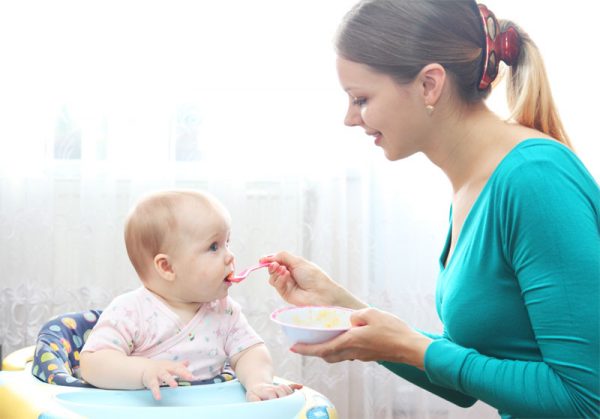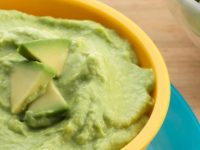Baby feeding chart
The World Health Organization in collaboration with employees of various institutions, involved in the study of the optimal menu for babies in their first year of life, elaborated a baby feeding chart. Below is the baby feeding chart for children under one year.

When to give your baby new products is one of the most difficult issues, that generates a lot of controversy among both professionals and young mothers.
Baby feeding chart. Nice table to use
| Type of food | Time of introduction | What to start with | Portion size |
| Vegetable Puree | Starting at the age of 5−6 months. | Mono-component puree, made of white or green vegetables. | Starting with ½ teaspoon and gradually increasing the amount of one-time feeding to 100−150−200 g. |
| Cereal without milk | At 6 — 7 months of age, if you child is normal or overweight. If lack of weight — start earlier — at 4−5 months. | Gluten-free cereals such as corn, rice and buckwheat. In case of good digestion, you can try oatmeal, and further porridges from a variety of cereals. | Starting with ½ teaspoon and gradually increasing the amount of one-time feeding to 100−150−200 g. |
| Cereal with milk | 1 or 2 month after starting eating cereal without milk | Gluten-free cereals such as corn, rice and buckwheat. In case of good digestion, you can try oatmeal, and further porridges from a variety of cereals. | Starting with ½ teaspoon and gradually increasing the amount of one-time feeding to 100−150−200 g. |
| Semolina, barley, millet, barley porridge | At 11 — 12 month or a bit earlier if you baby is underweight. | Initially give very well boiled porridge made from one type of cereal. | Starting with 2 teaspoons and gradually increasing the amount of one-time feeding to 100−150−200 g. |
| Mashed meat | At 8 months | First, give meat puree made from one type of meat, it can be veal, beef, rabbit meat or turkey. | The initial portion is ½ teaspoon with a further increase to 50−70−100 g. |
| Meat offal — heart, tongue, liver | At 9−10 months mixed with meat pureeAt 12−14 months as a separate dish | Not oftener than twice a week | The initial portion is ½ teaspoon with a further increase to 50−70−100 g. |
| Fruit puree | At 7−8 months | Mono-puree of not bright fruit. | Starting with ½ teaspoon and gradually increasing the amount of one-time feeding to 100−150−200 g. |
| Berry puree | At 12 months | With the introduction of berries you need to be careful and monitor the baby’s reaction. | Starting with ½ teaspoon and gradually increasing the amount of one-time feeding to 100−150 g. |
| Yoghurt | At 9 months | Pure yoghurt then fruit yoghurt without sugar | Starting with ½ teaspoon and gradually increasing the amount of one-time feeding to 100−150−200 g. |
| Cottage cheese | At 8 months | Pure cottage cheese then cottage cheese with fruit without sugar | Starting with ½ teaspoon and gradually increasing the amount of one-time feeding to 50 g. |
| Kids cookies | At 9 months | Starting with ⅛ and increasing to 1 cookie | |
| Fish | At 10 months or later if your baby is prone to allergies | WhitefishNot oftener than twice a week | Starting with ½ teaspoon and gradually increasing the amount of one-time feeding to 100−150−200 g. |
| Juice | At 10 months | Apple, pear juice | Starting with ½ teaspoon and gradually increasing the amount of one-time feeding to 100 g. |
| Oil | At 6 months | Olive, corn or sunflower oil | Starting with 3−5 drops with further increase up to 1 teaspoon, which is added to meat or vegetable puree. |
| Butter | At 7 months | Starting with ⅛ teaspoon and gradually increasing the amount of one-time feeding to 10 — 20 g. |
I hope, you find this baby feeding chart useful.




